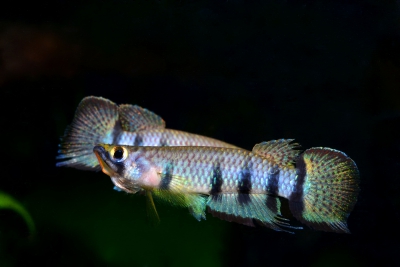spotted tilapia
| Scientific name | Pelmatolapia mariae |
|---|---|
| Descriptor | Boulenger |
| Year of description | 1899 |
| IUCN category (World) | LC |
| Family | Cichlidae |
| Genus | Pelmatolapia |


Introduction
Pelmatolapia mariae, commonly known as spotted tilapia, is a fresh water fish.
This sheet is currently being prepared. The texts currently proposed come from our data model or are being drafted. To request priority for this content, you can write to us HERE.
Who is it?
Morphology
-
Average size17 cm
-
Maximum size32 cm
-
Patternponctuations
-
Average size17 cm
-
Maximum size32 cm
-
Patternponctuations
How to recognize This fish ?
The spotted tilapia measures between 17 and 32 cm. This fish is tricolore with a predominantly jaune, noir and gris body. The also has noir ponctuations.
Behaviour & Life cycle
-
dietomnivorous with alguivorous tendency
-
Sociabilityliving as a couple
-
territorialNo
-
Way of livingdiurnal
The spotted tilapia is a fish living as a couple naturally found near the bottom. This species is omnivorous with alguivorous tendency .
Although the spotted tilapia is non-territorial, it is sometimes aggressive towards other species.
Reproduction
-
Reproductionovipare qui pond sur substrat découvert
The spotted tilapia is a fish ovipare qui pond sur substrat découvert. This fish protects its eggs from nearby predators.
Harmless species
This species does not represent any particular threats to humans when encountered in its natural environment.
Origin and distribution
What is its habitat?
Natural environment characteristics
-
Temperature20 - 25 °C
-
pH (acidity)6 - 8
-
gh (hardness)5 - 19
Biotope presentation
This animal evolves in areas characterized by a strong presence of vegetation (aquatic and marsh plants, decaying organic matter, roots...).
This species lives near large roots, in which it can find refuge in case of danger. This type of habitat is often found not far from the banks.
Species of the same biotope
To go further
Sources & Contributions
Participation & Validation
The Fishipedia team and specialist contributors are committed to providing high-quality content. However, although the information comes from scientific sources or testimonials from specialists, the cards may contain inaccuracies.

Adrien Falzon
Translation
Translation done with the valuable contribution of our translators, who make this information available to a wider audience. We sincerely thank them for their commitment.
Scientific partners
Species of the same family
Species of the same biotope
























